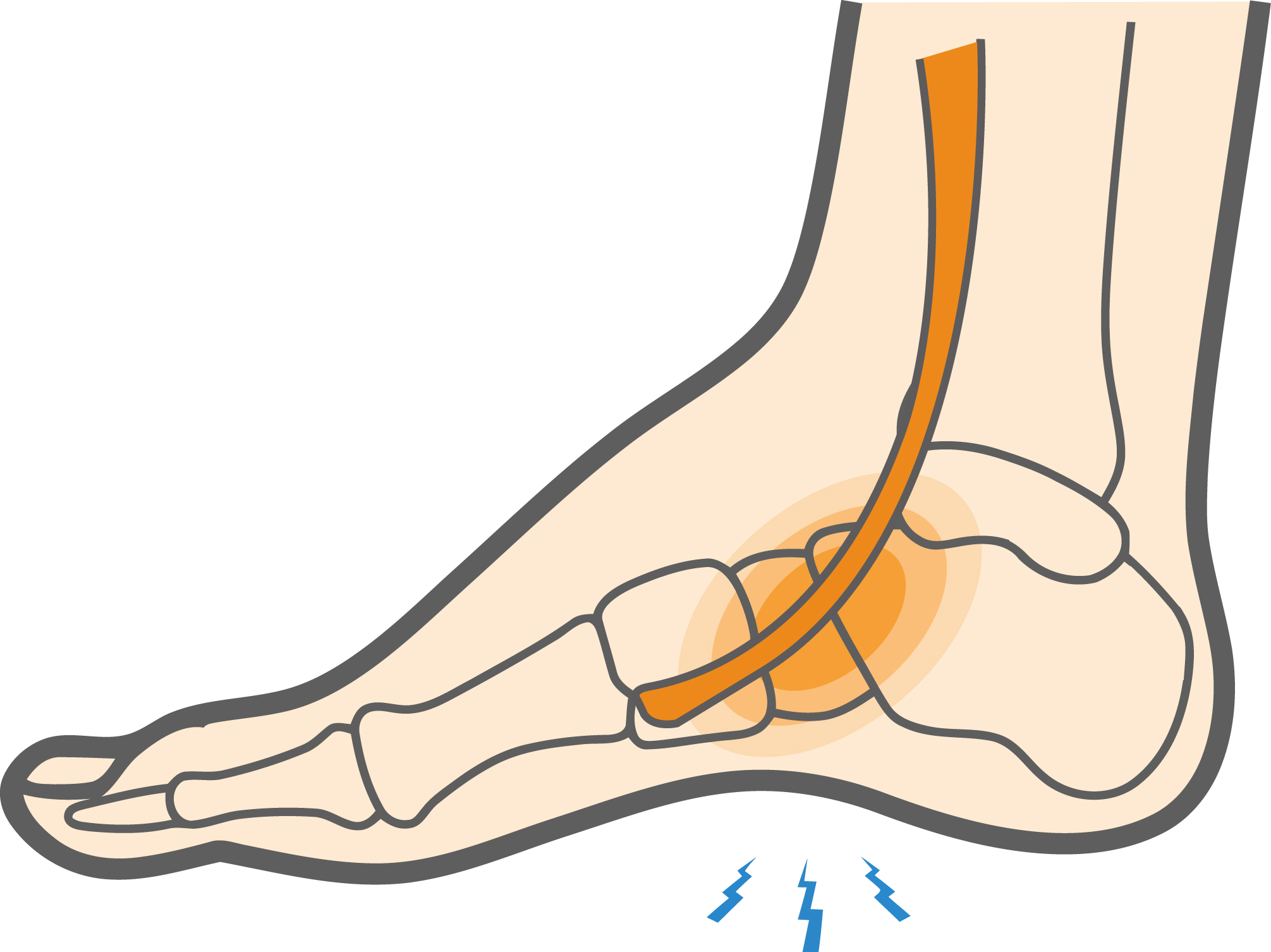Tendons are strong, fibrous cords that connect muscles with bones. The extensor tendons of your foot run across the top of your foot, connecting your lower leg to your toes. These tendons help you bend your foot up and raise your toes. Overuse of these tendons can cause inflammation, called tendon inflammation or extensor tendonitis of the foot.
Extensor Tendonitis of the Foot Causes, Symptoms & Treatment
Tendons are strong, fibrous cords that connect muscles with bones. The extensor tendons of your foot run across the top of your foot connecting your lower leg to your toes. These tendons help you bend your foot up and raise your toes. Overuse of these tendons can cause inflammation, called tendonitis.
Overview
Overview

What causes Extensor Tendonitis of the Foot?
A common cause of extensor tendonitis of the foot is overuse. Over time, repetitive motion, seen in activities like running, can irritate the tendons, causing them to become inflamed. This is classified as an overuse injury, and it often affects athletes or individuals with intense daily activity. As these tendons are very close to the skin, they may also become irritated from poorly fitting shoes or sneakers, especially if the laces are tied too tight.
Extensor tendonitis is most common in these sports:
- running
- cross country
- hockey or figure skating
Symptoms
Symptoms of extensor tendonitis of the foot usually include top-of-foot pain, especially over the tendons. Pain often develops very slowly over time rather than due to a single event. Other common symptoms include:
- Pain with curling the toes or raising the foot up (engaging the extensor muscle group)
- Mild swelling, especially with activity
When to see a doctor
If you have a nagging top-of-foot pain that does not go away over time, you should consult with your doctor. At your visit, your doctor will conduct a physical examination, looking for signs of tenderness and tendon inflammation around your foot. Your doctor may also try to recreate the symptoms you experience when active by asking you to move your foot up and down against resistance. X-rays may also be taken to rule out other causes of your injury, such as bone spurs or a fracture. Sometimes, other imaging tests, such as magnetic resonance imaging (MRI), may be ordered to confirm the diagnosis and rule out an extensor muscle strain or other types of soft tissue injury.
Non-operative treatment
Treatment of extensor tendonitis of the foot is usually conservative. Your doctor may advise you to take time off from running or other physical activities that cause the top foot pain. Other common foot tendonitis treatments include:
- Applying ice and elevating your foot to reduce tendon inflammation and pain
- Wearing a cast or special boot to support your foot
- Anti-inflammatory medication for pain relief
- Physical therapy to strengthen your foot
- Making sure you have the appropriate footwear
- Orthotics to correct any foot and ankle imbalances
Try these exercises to help address your condition:
Below is a PDF of the Exercise Program
Extensor Tendonitis of Foot
Surgical Treatment
Surgery is generally not needed to treat extensor tendonitis of the foot. In rare cases, surgery may be considered if your symptoms don’t improve with rest and other conservative treatments. Your doctor will advise if you should explore surgery as a foot tendonitis treatment option.
Recovery
In most cases, normal activity can resume within a few weeks with rest and conservative treatment of extensor tendonitis of the foot. It’s important to address any underlying overuse injury factors to avoid recurrence.
GET BACK TO WHAT YOU LOVE. FASTER
Sources
https://www.sportsmedtoday.com/fhl-tendinopathy-va-132.htm
Frequently Asked Questions
Can extensor tendonitis be mistaken for another condition?
Extensor tendonitis of the foot can sometimes be misdiagnosed as a stress fracture or arthritis due to similar symptoms like the top of foot pain and swelling. Imaging tests like an MRI can help differentiate these conditions.
What is the main cause of extensor muscle strain?
Extensor muscle strain is typically caused by overuse injury, poor biomechanics, or excessive stress placed on the foot during activities like running or jumping.
Do I need to stop all physical activity during treatment?
Not necessarily. While rest is important, your doctor may recommend modifying your activities rather than stopping completely. Low-impact exercises and physical therapy can help manage tendon inflammation without worsening the injury.
How can I prevent extensor tendonitis of the foot in the future
Wearing well-fitting shoes, gradually increasing activity levels, using proper technique, and incorporating foot-strengthening exercises can help prevent extensor tendonitis of the foot and other overuse injuries.

